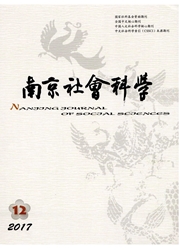

 中文摘要:
中文摘要:
绿色全要素生产率将能耗和污染排放等因素纳入经济增长模型,是评判经济可持续发展质量的重要依据。采用随机前沿分析和空间计量模型对2001-2014年我国省际绿色全要素生产率的测算和敛散性的实证分析发现:我国省域绿色全要素生产率呈缓慢增长趋势,绿色技术进步较绿色效率增长贡献更为突出;空间互动状态下,全域绿色全要素生产率呈条件收敛并产生俱乐部趋同现象,但收敛速度较不考虑空间互动因素有所减缓;人口城市化水平和产业结构升级对绿色全要素生产率增长具有显著的本地效应,市场化程度则存在负溢出效应。本研究认为,提升资源环境约束下全要素生产率的省际协调度依赖于推动滞后区域的城市化进程和产业升级。
 英文摘要:
英文摘要:
By putting energy consumption and pollutant discharge into economic growth model, Green Total Factor Productivity (GTFP) becomes an importnant basis for evaluating sustainable economic development. Based on SFA method and spatial econometric models, the provincial GTFP from 2001 to 2014 in China showed an increasing trend with a decreasing rate. The GTFP showed trends of conditional convergence and club convergence under the condition of spatial interaction among provinces. Population urbanization level and the industrial structure upgrade have significant local effects on GTFP. However, marketization degree has negative spillover effect. The enlightning significance of this article is by illuminating the fact that promoting urbanization process and industrial upgrading in lagging regions should be helpful to enhance the inter coordination degree of total factor productivity under the constraint of resources and environment.
 同期刊论文项目
同期刊论文项目
 同项目期刊论文
同项目期刊论文
 期刊信息
期刊信息
